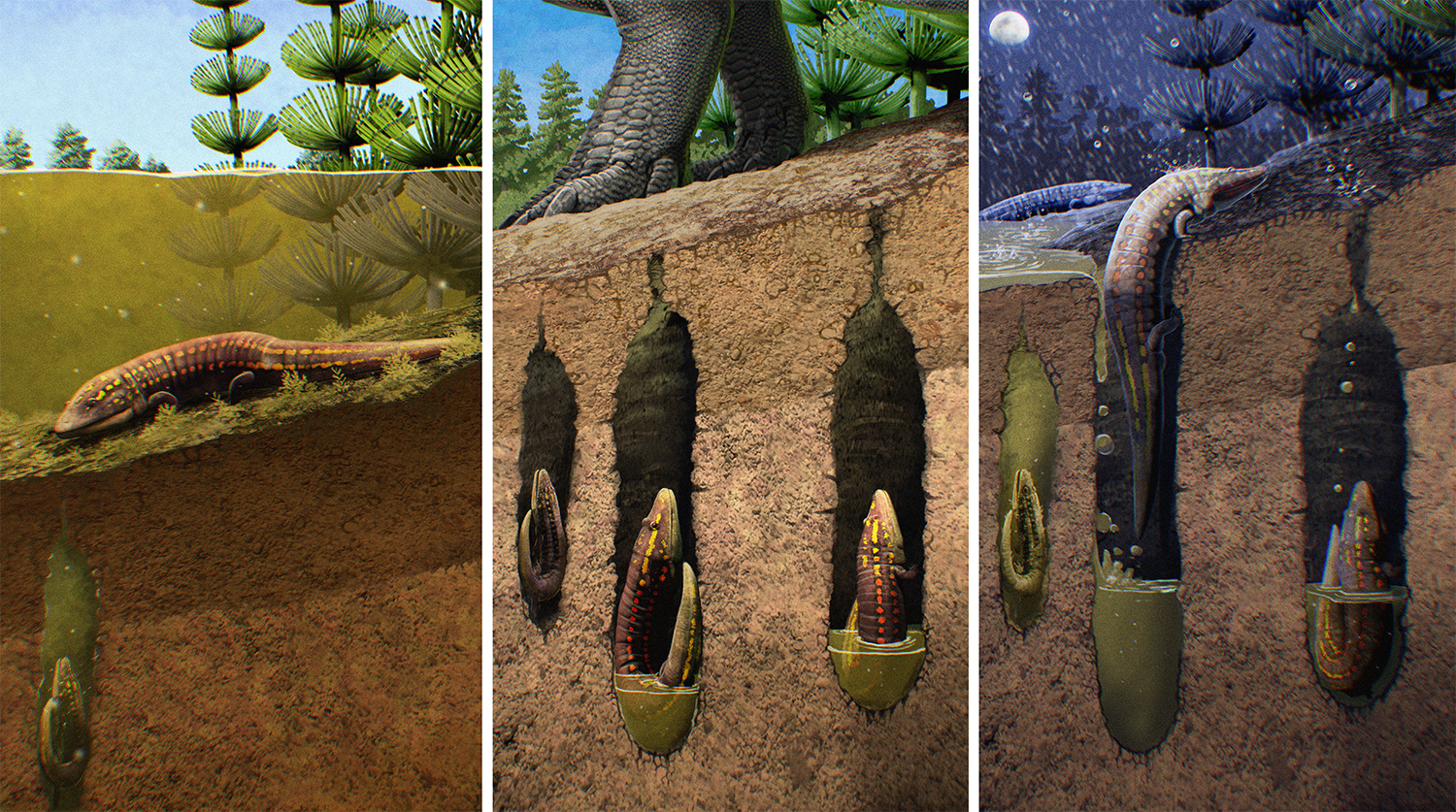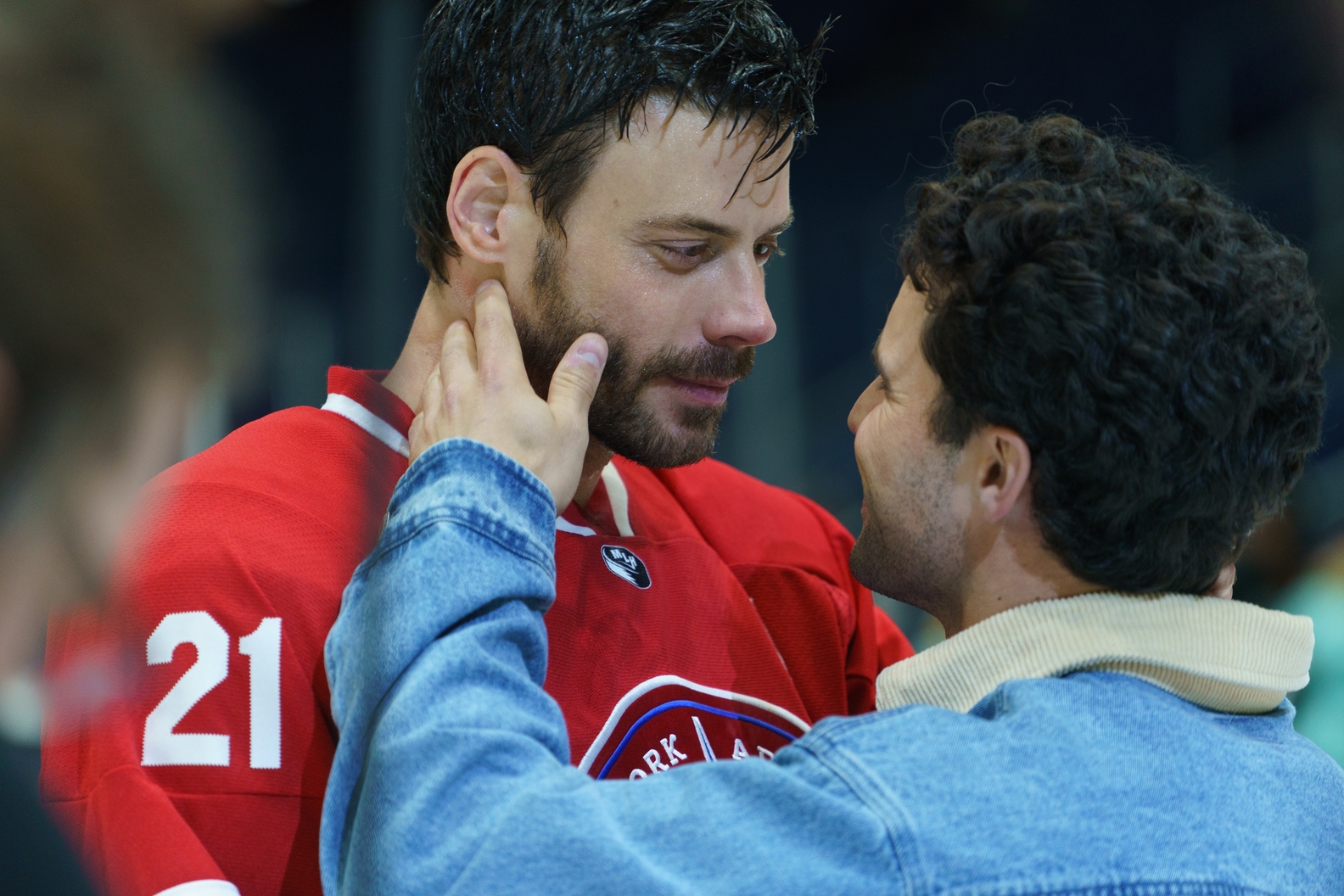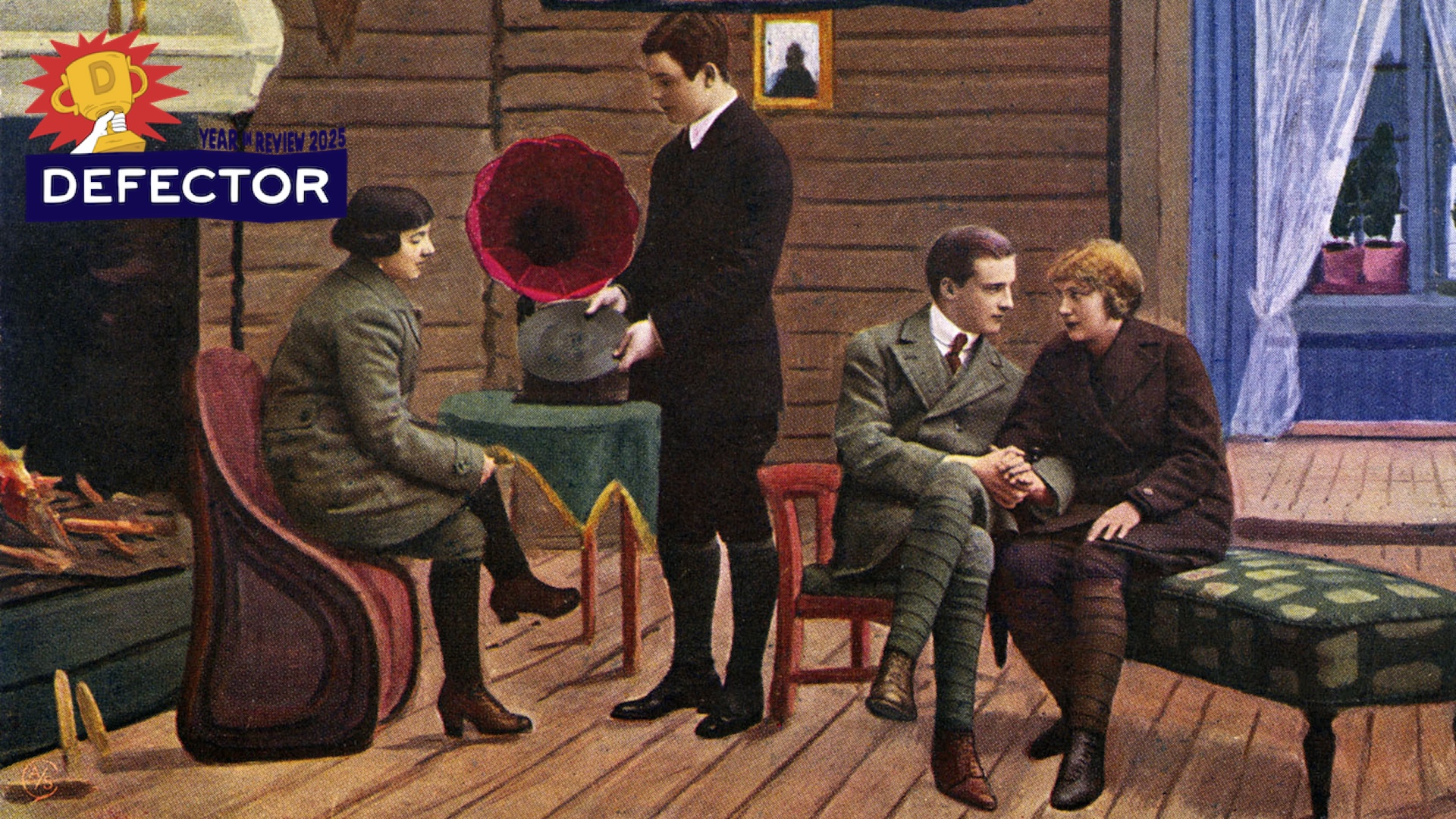In the winter of 2015, David Lovelace, a vertebrate paleontologist at the University of Wisconsin-Madison Geology Museum, remembered a rock the size of a soccer ball that had been sitting on a shelf in his lab for months. He'd collected it the previous year, walking back to his car after a day of searching for fossils. It contained a small burrow, barely four inches long. He wanted to extract the burrow. "Being a good geologist, I hit the whole thing with my hammer," Lovelace said.
Unfortunately, the strike did not free the burrow, but it did reveal the skull of a small animal that had died inside. The tapered snout of the skull appeared crocodilian. But as Lovelace glued the bones back together and prepared the fossil, he realized it was actually an amphibian. Its skull had small pits and ridges characteristic of early amphibians, as well as grooves indicating a lateral line organ. Another strike of the rock revealed another skull and partial skeleton of the same kind of animal. Lovelace and his colleagues recently reported on this new species, a burrowing amphibian, Ninumbeehan dookoodukah, in Proceedings of the Royal Society B.
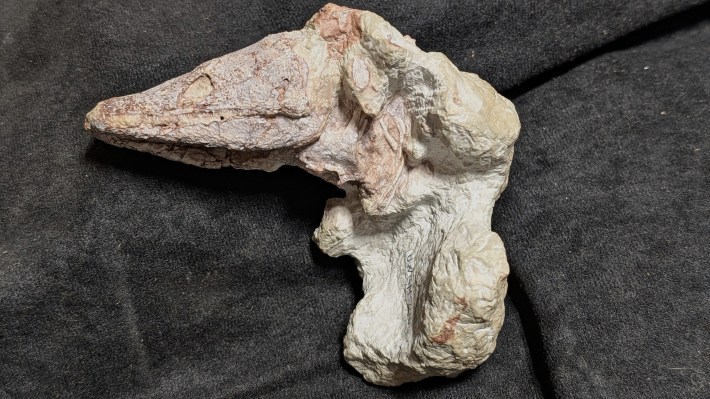
Lovelace was originally searching for fossils in the Popo Agie, a Late Triassic rock formation in what is now Wyoming. Popo Agie (pronounced puh-POE-zha) is a Crow Indian word meaning "beginning of the waters," and the stones there are studded with early crocodiles and some amphibians. Most of the paleontological work from Popo Agie took place in the early 1900s, and Lovelace wondered why no one had gone back. "Growing up in Wyoming, it had been known as the 'Big Red Dead'," he said. "'There's no fossils. It's not worth your time.'" But Lovelace found the amphibians in a stripe of rock that is slightly older and just below the Popo Agie, beds he nicknamed "Serendipity."
Lovelace wanted to revisit the Serendipity Beds to find more burrows, so he and a team of researchers including Cal So returned in 2015. So was in their first year of undergraduate at George Washington at the time. "As a kid, I've always wanted to be a paleontologist," said So, who is now a researcher affiliated with the Field Museum in Chicago. "And this was my opportunity to be a paleontologist." Over several years, So helped excavate more tiny burrows from what were once ancient, meandering riverbeds in the Triassic. The burrows appeared in the forms of vertical, upside-down domes about the size of a can of Pringles. Some contained complete, articulated N. dookoodukah skeletons and others held a loose pile of bones—a sign that some may have been buried instantly while others had already decomposed at the time of fossilization.
During the time of N. dookoodukah, Pangea experienced severe megamonsoons: drenching wet seasons alternating with sometimes lethally hot, arid stretches. Amphibians, whose semi-permeable skin makes them highly reliant on water, have been around for 300-something million years. But these burrows were buried in a brick red stripe of sandstone, one indicator of parched conditions. (Younger rocks above it were a beautiful purple, one sign of wetter times.) "In this long history of time, what were the ways that amphibians were able to stay in the game?" So asked. "Amphibians had to do something."
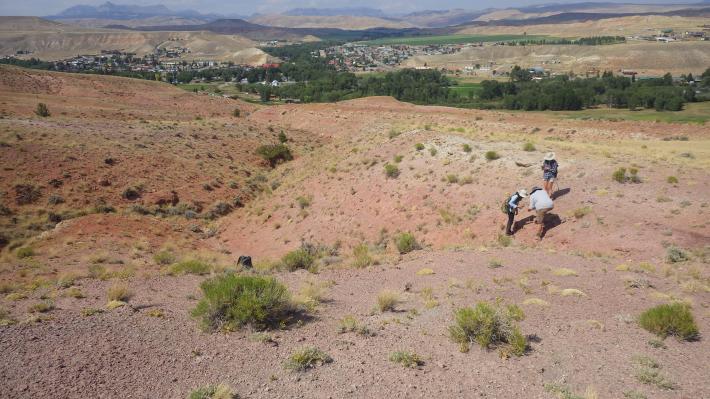
That something, or at least part of that something, was these burrows. It was clear N. dookoodukah had dug the burrows, as the species was found in every one. And their skulls were shaped like modern burrowing salamanders, like those in the family Sirenidae. The researchers hypothesize that the ancient amphibians were estivating—the process of spending a hot or dry period in a dormant state.
This is a common strategy of modern amphibians, including Sirenidae salamanders and spadefoot toads living in the dry Southwest. "They burrow underground, form some sort of chemical mucus cocoon, and lower their metabolic rate," So said. Lungfish, which are not amphibians but lobe-finned fish, also estivate during the dry season. The fact that this behavior can be observed in both close and distant species allowed the researchers to infer that species in-between, such as N. dookoodukah, could have exhibited this behavior as well. "It's amazing to see these little burrowers that are doing this thing, and we have so many of them," Lovelace said.
As the researchers began thinking about names for the new species of amphibian, they reached out to the Tribal Historic Preservation Office of the Eastern Shoshone, as the fossils were located on the tribe's historic territory. The office works for the Wind River Indian Reservation, which is home to the Eastern Shoshone and Northern Arapaho tribes. "This area was home to our people for thousands of years," D. Lynette St. Clair, an Eastern Shoshone cultural preservationist and consultant, wrote in an email. "The presence of fossils throughout the Shoshone Homelands is evident through our creation stories which tell us that the land was once covered by water."
Many of the students on the reservation are learning Native languages, which the U.S. government actively attempted to eradicate. St. Clair grew up learning the language from Shoshone speakers. "I’ve always been proud of the fact that I have been gifted with the ability to speak the language of my parents and their parents," she said. She added that she entered her line of work because she believes that "cultural preservation and language are crucial for understanding our past, present, and future."
When the researchers started talking with educators at Fort Washakie School, St. Clair knew she needed to involve the tribe's elders, such as Arlen Shoyo, the middle school Shoshone language teacher, and Reba Teran, who created a 9,000-word audio dictionary of the language. "It was our students, with the help of our language teachers and elders, who came up with the name," St. Clair said. Ninumbeehan translates to the Little People, a reference to Eastern Shoshone culture, and dookoodukah translates to flesh-eater, a reference to the fossil's sharp teeth. "The Ninumbee are still here with us, but back in the old days they did honor them," Teran explained in the paper's supplementary information.
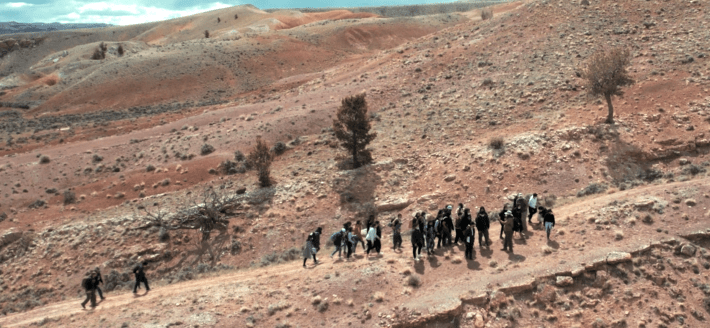
In 2022, the researchers and the school organized a field trip to the dig site, which is about 10 miles outside the border of the reservation. So guided a class of seventh-graders, as well as elders and educators, how to find and identify fossil remains. So added that much of the way people study the natural world has been restricted to Western science, which disregards or disqualifies other ways of knowing. "When we are teaching, we're also learning about how their community is working, and how their community might interpret these fossils in a different way," they said.

The day of the field trip started off cold, buffeting everyone with rain, sleet, and then snow. But the weather eventually cleared up. "I like to think that our ancestors came in the form of precipitation and were watching us, reminding us that the lands where these items were found need to remain intact and handled with the utmost respect," St. Clair said.
The students found several fossil sites on their own, St. Clair noted, adding that offering students hands-on experience could act as a route to a possible career. This partnership is ongoing; students in Lovelace's lab still work with the Fort Washakie students over Zoom, teaching them how to curate and work with fossils. "They'll be making a display for the school," Lovelace said.
